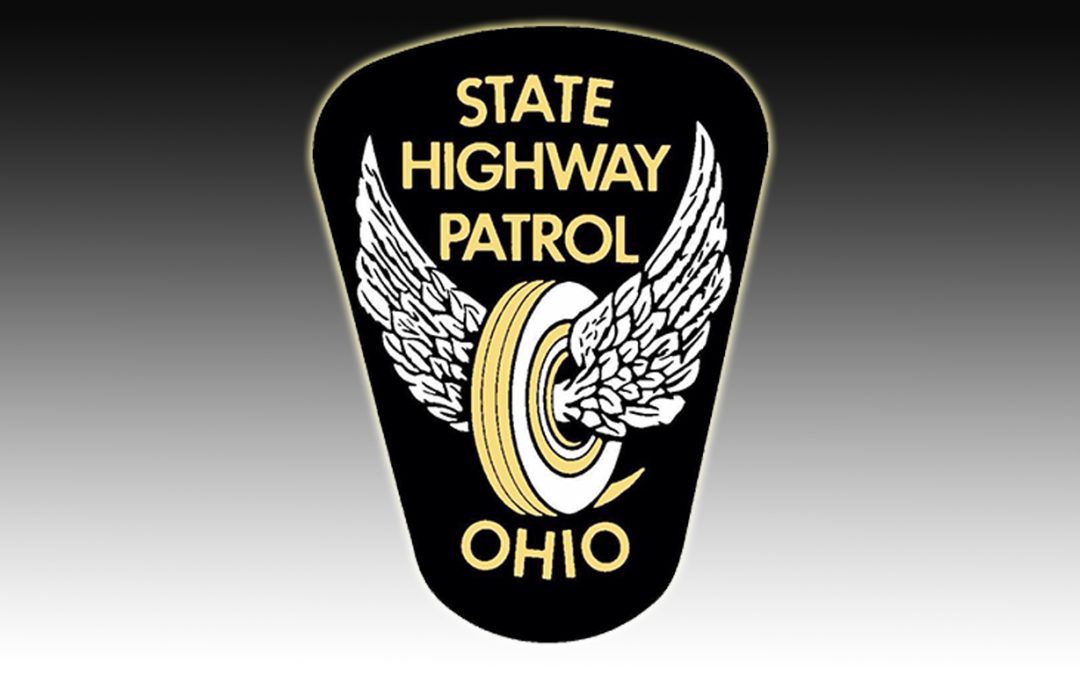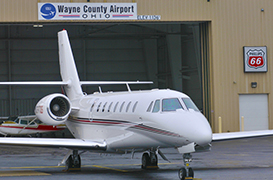


OSHP WORKS TO REDUCE HOLIDAY CRASHES
COLUMBUS, OHIO, 21 Nov. 2023 — Traditionally, the Thanksgiving holiday weekend is one of the busiest travel periods each year. As Ohioans and our visitors travel throughout the state, Ohio State Highway Patrol troopers will be enforcing safe driving.
Troopers will be highly visible and cracking down on impaired drivers and those failing to wear a safety belt from Wednesday, November 22 at midnight through 11:59 p.m. on Sunday, November 26.
“Driving sober, belted, and focused on the road can help prevent senseless tragedies,” said Governor Mike DeWine. “I urge everyone to drive responsibly and to buckle up.”
Many Thanksgiving celebrations involve alcohol, which increases the possibility of impaired driving. During last year’s Thanksgiving reporting period, which ran from November 23 – 27, there were 18 fatal crashes in which 19 people were killed, including four instances of pedestrians being struck. Of the 14 crashes where pedestrians were not involved, safety belts were available but not used in 11 of the incidents. Within the same reporting period, alcohol and/or drugs were linked to 12 of the fatal crashes.
“We hope everyone has a safe Thanksgiving,” said Colonel Charles A. Jones, Patrol superintendent. “When you designate a sober driver, put your phone down and properly use safety belts, you are helping save lives.”
The Patrol also made 278 arrests for impaired driving and assisted 1,534 motorists.
Motorists are encouraged to call #677 to report impaired drivers, drug activity or stranded motorists.

PUBLIC NOTICE: WAYNE CO. AIRPORT
PUBLIC NOTICE: WAYNE CO. AIRPORT MASTER PLAN UPDATE, PUBLIC INFORMATION MEETING #1
WAYNE COUNTY, OHIO, November 15, 2023 ─ The Wayne County Board of Commissioners, as owner and operator of the Wayne County Airport, will be holding a public Open House on November 30, 2023, from 6 PM to 8 PM located in the Airport Terminal Main Hangar at the Wayne County Airport, 6020 Honeytown Road, Smithville, Ohio.
The Wayne County Board of Commissioners has recently begun to update the Airports Master Plan and Airport Layout Plan (ALP) to support growth and guide development to meet existing and future needs. An opportunity will be available for the public to provide comments concerning the project and the airport’s future direction. There is no formal presentation planned; attendees will be able to view presentation materials at their own pace and ask questions of the County, airport staff, and their consultants.
Comments and suggestions received during the Open House will be evaluated by the project team and incorporated into the study as appropriate. The proposed improvements are intended to achieve compliance with Federal Aviation Administration (FAA) regulations and to meet the existing and projected aviation needs of the Airport. Comments can be provided via the project website https://www.bjj-master-plan.com/
For more information, contact Patrick Herron, County Administrator, at pcherron@wayneohio.org .

STAY ALERT FOR DEER WHILE DRIVING
COLUMBUS, OHIO, November 13, 2023 – The AAA, Ohio State Highway Patrol, Ohio Department of Insurance, Ohio Department of Transportation, Ohio Department of Natural Resources and the Ohio Turnpike and Infrastructure Commission want to remind motorists of the increase in deer-related traffic crashes this time of year.
Since 2018, statistics from the Ohio State Highway Patrol show there were 104,328 deer-related crashes on Ohio’s roadways. While 95% of deer-related crashes only resulted in property damage, 33 crashes resulted in fatal injuries to motorists, with a total 34 people being killed. Additionally, 47% of these crashes occurred in October, November and December.
“Ohio drivers should keep in mind that deer activity always increases during this time of year – especially at dawn and dusk,” said Governor Mike DeWine. “With Ohio’s strengthened distracted driving laws now in place, we anticipate that more drivers will stay alert to their surroundings, and as a result, we hope fewer deer-related crashes will take place this fall.”
At least 50 deer-related crashes happened in each county, with the highest taking place in Stark, Richland, Hancock and Defiance counties. The routes with the most deer-related crashes were U.S. Route 30, state Route 2, Interstate 71, Interstate 75 and Interstate 77.
“You’re more likely to spot deer when you practice safe driving habits and have your full attention on the roadway,” said Colonel Charles A. Jones, Patrol superintendent. “If you happen to strike a deer, if you’re able, move yourself to a safe place, turn on your hazards and report the crash.”
According to the Ohio Department of Natural Resources (ODNR) Division of Wildlife, deer become visibly active in October, November and December. This is due in large part to the fall breeding season, which sometimes causes deer to dart into roadways with little caution. This unpredictable movement
leads to an increase in deer-related vehicle crashes. Drivers are encouraged to be extra cautious in areas where fencerows, riparian corridors or other blocks of forested habitat intersect a roadway.
“With deer activity on the rise, it’s extra important at this time of year to watch for deer,” said Division of Wildlife Chief Kendra Wecker. “Deer often move in groups, so if you see one, slow down and be prepared for more to cross the road.”
On average, the Ohio Department of Transportation and the Ohio Turnpike and Infrastructure Commission remove more than 13,000 deer carcasses from our roadways each year.
Cost of Deer-Vehicle Collisions:
Colliding with a deer is not only dangerous, it’s also increasingly costly. Recent data estimates the average insurance claim for a deer-vehicle collision in Ohio is nearly $5,000. Vehicle sensors found on newer vehicles continue to increase repair costs. In fact, AAA found these new safety systems can double repair bills for minor collisions. The included graphic depicts the estimated repair costs for various vehicle sensors (more information at Newsroom.AAA.com). Without adequate insurance, drivers are left paying the bill. This is why it’s important to make sure you’re covered before a crash occurs.
“In the event of an accident, it’s important to have adequate insurance for financial protection,” Ohio Department of Insurance Director Judith L. French said. “Now is the time for Ohioans to contact their insurance agents to complete an insurance review.”
AAA and the Ohio Department of Insurance remind drivers that the optional comprehensive coverage (also known as “other than collision” coverage) portion of an auto insurance policy often is used to pay for deer-vehicle damage repair. Collision or liability-only policies do not cover the damage. With the vast number of costly deer collisions on Ohio’s roads, it is often a good idea to evaluate maintaining comprehensive coverage, even with older vehicles.
“While we can’t predict the actions of deer and other animals on the road, anything you can do to help prevent a crash or reduce the damage from an animal-related collision can save money and potentially save lives,” said Public Affairs Manager Kara Hitchens, AAA Club Alliance.
How to avoid animal collisions:
· Scan the road ahead: Looking ahead helps provide enough reaction time if an animal is spotted. Also, remember some animals, like deer, move in groups.
· Use high-beam headlights if there is no oncoming traffic: This can help you spot deer or other wildlife more quickly and give you time to slow down, move over or honk the horn to scare the animal away. High beams also help in spotting animals’ reflective eyes.
· Be extra cautious at dawn and dusk: Deer tend to be more active in the early morning and at dusk. That’s why these are peak times for deer-vehicle collisions.
· If a collision is unavoidable, apply the brakes firmly and remain in your lane: Swerving to avoid an animal can often cause a more serious crash or cause you to lose control of your vehicle. Drivers who swerve to miss a deer and hit something else may be charged for an at-fault crash.
· Always wear a seatbelt and remain awake, alert and sober: The chances of getting injured when hitting an animal are much higher if you don’t have your seatbelt on. If you’re distracted or drowsy, you’re not properly scanning the road for deer and could end up spotting them too late.
What to do if you hit a deer:
· Following the collision, call the police.
· Avoid making contact with the deer/animal. A frightened and wounded animal can be dangerous and pose a threat when approached or might further injure itself.
· Activate the vehicle’s hazard lights whether it’s light or dark outside.
· If possible, move the vehicle to a safe location out of the roadway, and wait for help to arrive.
· Drivers should contact their insurance agent or company representative as quickly as possible to report any vehicle damage.
Ohioans with insurance questions can contact the Ohio Department of Insurance at 1-800-686-1526 or via www.insurance.ohio.gov. The website also contains wide-ranging educational insurance information.
AAA provides more than 63 million members with travel, insurance, financial and automotive-related services. Since its founding in 1902, the not-for-profit, fully tax-paying AAA has been a leader and advocate for the safety and security of all travelers. AAA clubs can be visited online at AAA.com.
As always, motorists are also reminded they can dial #677 from their mobile device to be connected to the nearest Ohio State Highway Patrol Post during a roadway emergency. A statistical map containing deer-related crash information can be found here and additional information on crash statistics can be found on the Ohio State Highway Patrol’s Ohio Statistics and Analytics for Traffic Safety (OSTATS) Dashboards.

PROTECTING YOUTH: OAG SUES META
COLUMBUS, OH, Oct. 24, 2023 — Ohio Attorney General Dave Yost and 32 of his colleagues filed a federal lawsuit today against Meta alleging that the social-media technology giant designed and deployed harmful features for Facebook and Instagram to addict young users to its platforms and enhance its bottom line.
The lawsuit, filed in U.S. District Court for the Northern District of California, claims that Meta, instead of working to mitigate the damage inflicted by its social-mediA mobile phone with platforms, publicly concealed the severity of the psychological harm they cause, including addiction to the platforms, which could, and in some cases did, result in physical harm.
In related complaints filed today in state courts, eight other attorneys general made similar allegations. Florida is filing its own federal lawsuit in the U.S. District Court for the Middle District of Florida. The federal and state lawsuits stem from a bipartisan investigation of Meta.
“Given that children, when they’re on these platforms, become vulnerable to cyberbullying and online predators, Meta has added insult to injury, further injuring our children,” Yost said. “I trust that the parents within Meta itself might reconsider these practices, but, until then, initiating lawsuits should compel the company to change its ways.”
The federal lawsuit asserts that Meta violated state consumer protection laws by assuring the public that the platforms are safe and suitable for young users. Yet the company’s practices harmed and continue to harm the mental and physical health of teenagers and pre-teens, the suit maintains, fueling what the U.S. Surgeon General has called a “youth mental health crisis,” which has prompted suicides, devastated families, and damaged a generation of young people.
The complaint further alleges that Meta violated federal law – specifically, the Children’s Online Privacy Protection Act – when the company, aware that users younger than 13 were actively on its platforms, collected data from those users without parental consent. Meta targeted these youngest users after identifying them as a “valuable but untapped” base, as reported in a 2021 Wall Street Journal article.
Although much of the lawsuit relies on confidential material not yet available to the public, some publicly available sources – including disclosures from former Meta employees – detail how the company deliberately sought to gain financially by addicting teens and tweens to its platforms.
Meta’s platform algorithms, the lawsuit says, push users into descending “rabbit holes,” with the objective of keeping users on the platform for long periods. Meta also allegedly used features such as infinite scroll and near-constant alerts in a concerted effort to hold young users’ attention. Such manipulative tactics entice teens and tweens to continually return to the platforms. Instead of disclosing the harm and making meaningful changes to minimize it, Meta publicly advertised their platforms as safe for young users.
The attorneys general also allege that the platforms served harmful content – including material associated with eating disorders, violence, negative self-perception and body-image issues, and bullying – to young users.
The lawsuit seeks injunctive and monetary relief caused by Meta’s platforms.
Joining Yost in the federal filing are the attorneys general of Arizona, California, Colorado, Connecticut, Delaware, Georgia, Hawaii, Idaho, Illinois, Indiana, Kansas, Kentucky, Louisiana, Maine, Maryland, Michigan, Minnesota, Missouri, Nebraska, New Jersey, New York, North Carolina, North Dakota, Oregon, Pennsylvania, Rhode Island, South Carolina, South Dakota, Virginia, Washington, West Virginia and Wisconsin.
Filing lawsuits in their respective state courts are the attorneys general of the District of Columbia, Massachusetts, Mississippi, New Hampshire, Oklahoma, Tennessee, Utah, and Vermont.